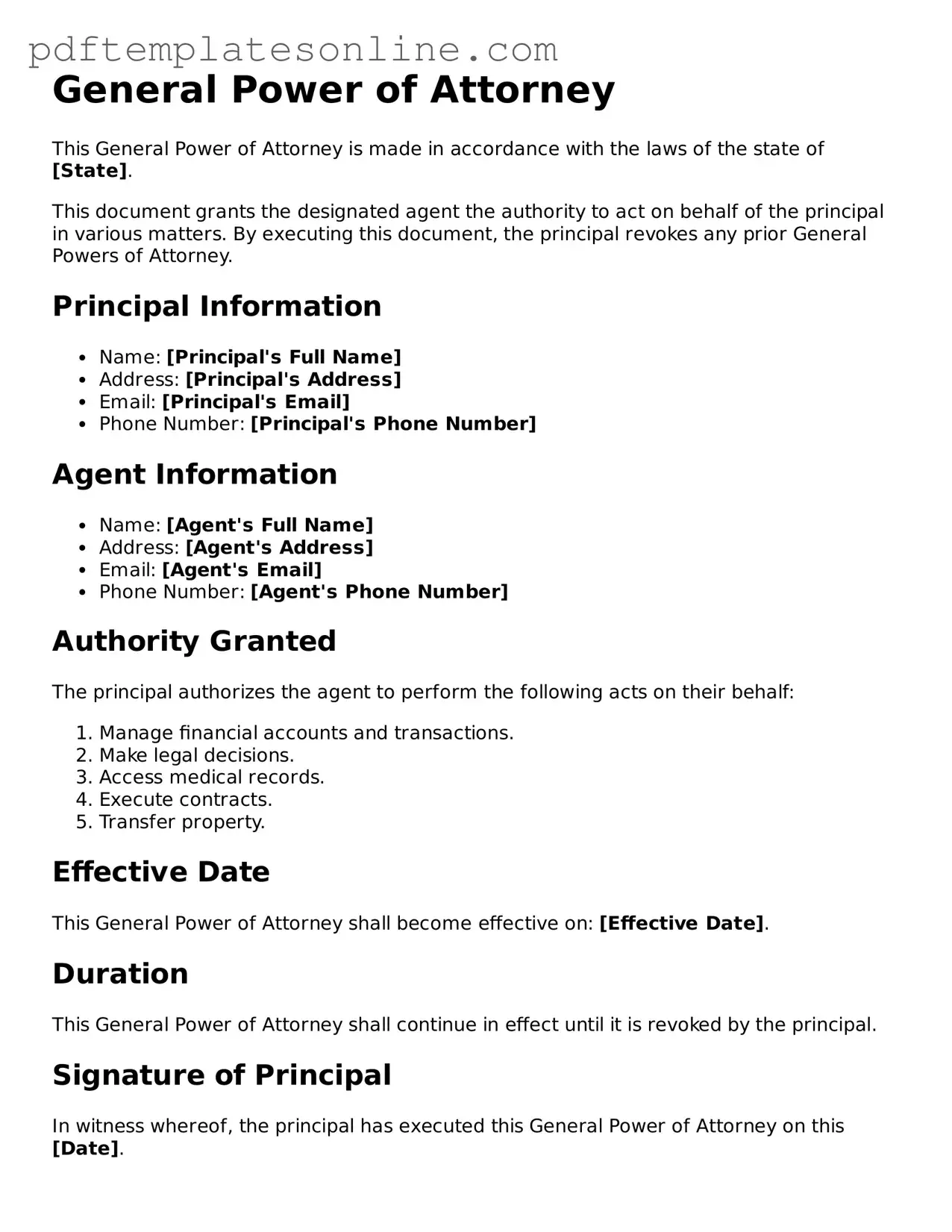When individuals decide to create a General Power of Attorney (GPOA), they often overlook critical details that can lead to significant consequences. One common mistake is failing to specify the powers granted to the agent. Without clear definitions, the agent may assume they have broader authority than intended. This ambiguity can lead to disputes or misuse of power, undermining the very purpose of the document.
Another frequent error involves not naming a successor agent. Life is unpredictable, and the primary agent may become unavailable due to illness, relocation, or other unforeseen circumstances. If a successor is not designated, the principal may find themselves in a difficult situation where no one is legally empowered to act on their behalf. This oversight can complicate matters during critical times.
Many people also neglect to consider the timing of the GPOA. Some forms become effective immediately upon signing, while others are contingent upon a specific event, such as the principal becoming incapacitated. Failing to understand these nuances can lead to confusion and unintended consequences, particularly if the agent needs to act quickly in an emergency.
Inaccurate or outdated personal information is another common pitfall. When filling out the GPOA, it is essential to ensure that all names, addresses, and contact details are current. Errors in this information can delay the agent's ability to act or even render the document invalid. It is prudent to review the form carefully before finalizing it.
Finally, individuals often underestimate the importance of notarization and witnessing. Many states require that a GPOA be notarized or signed in the presence of witnesses to be legally valid. Skipping this step can lead to challenges regarding the document’s legitimacy, potentially leaving the principal without the intended protections. Proper execution of the form is crucial to ensure its effectiveness.
